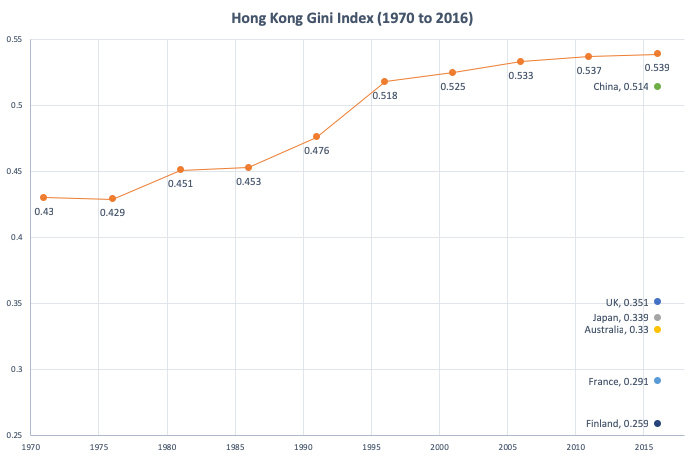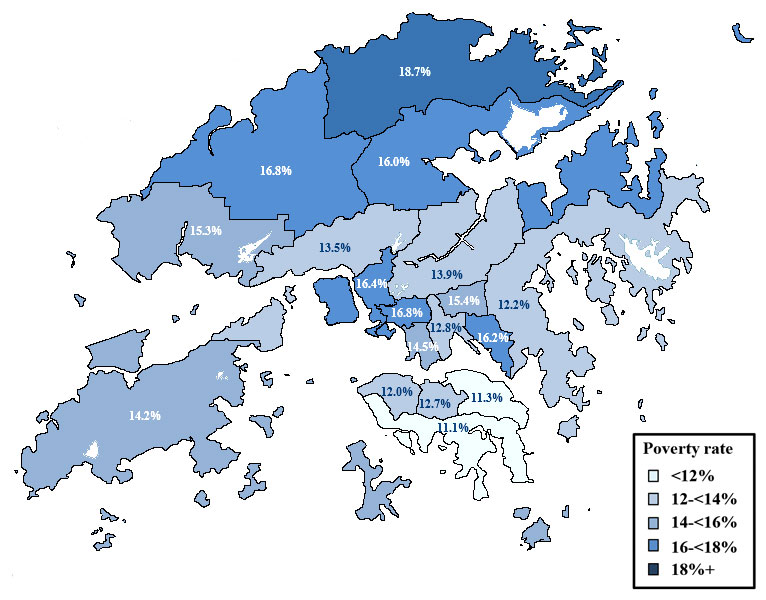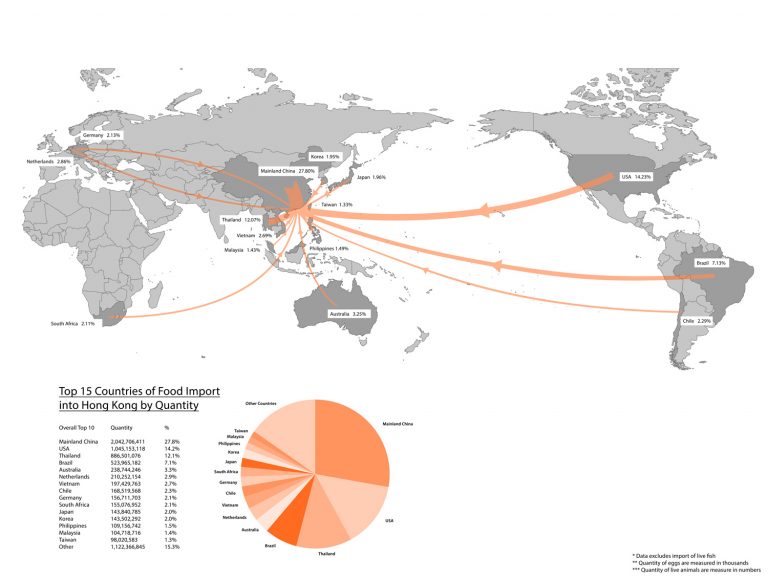Food and the City
by Daisy Tam
published on 19 December 2018
Introduction
For the first time in history, more than half of the world’s population is living in cities, as more people move to urban areas, this figure is expected to reach 70% in the next 30 years. According to the UN World Urbanization Prospects, there will be an additional 2.5 million urban residents by 2050 and the majority of this growth will be in Asia and Africa, which accounts for 90% of the increase. In the wider context of global population growth, rapid urbanization and climate change, feeding cities safely and sustainably would be one of the key challenges in the decades to come.
Historically, food security, defined as when “all people, at all times, have physical and economic access to sufficient, safe, and nutritious food to meet their dietary needs and food preferences for an active and healthy life” (FAO 1996) has been approached as an issue of availability, i.e. not having enough food, therefore the solution is focused on agriculture and increasing production. As our food systems industrialized, evolved and became more complex, researchers are adopting a more integrated approach, looking at the whole system of production, processing, distribution and consumption together with social, environmental and economic factors that affect both availability and access of food.
Hong Kong
This section provides a brief overview of the situation of our urban food system in Hong Kong. Food systems are complex, they include all the processes involved in getting food from farm to table to disposal. This is an under-researched topic in Hong Kong and there is a lack of data in many areas.
I am interested in the way cities feed themselves and Hong Kong is a valuable case study. Much of my recent work has been on surplus food rescue, but I believe that securing our entire urban food system is crucial to long term sustainable development, so that we can be more prepared and resilient in the face of climate change.
Hong Kong is a wealthy city, defined as a high income-economy by the World Bank. With a GDP of 340.1 billion USD ($359,996 HKD) in 2017, it is the 10thhighest GDP per capita based on Purchasing Power Parity (PPP).
As a regional and international hub, Hong Kong positions itself as Asia’s gourmet capital, attracting urbanites and visitors with its vast array of restaurants. It has been reported on many tourist websites that Hong Kong has one of the highest restaurant to population ratio in the world, one for every 300 inhabitants in the city.
Wealth Gap
However, all that glitters is not gold. Behind the façade of wealth and prosperity, the city also houses a large population of urban poor.
Hong Kong’s GINI coefficient, the index that measures the wealth gap between rich and poor, has been increasing steadily over the course of the past 5 decades. Standing at 0.539 in 2016, it is the highest ever recorded and substantially higher than other developed economies such as Japan, France, UK, Australia etc. Singapore on the other hand, saw its GINI coefficient drop to 0.485 in 2016, the lowest in the past decade. (Figure 1)

The GINI coefficient measures the deviation of the distribution of income among individuals or households within a country from a perfect equal distribution. A value of 0 represents absolute equality, and a value of 100 absolute inequality.
Urban Poor
According to the HKSAR government’s poverty report, 20% of the city’s population are poor, that is 1.5million people face poverty. A one-person household will have to make do with HKD$3,800/ month, while a household of 3 would have HKD14,000/month to live on.
For those who live on the breadline, this translates into HKD$30/person/ day for food, this affects especially children and the elderly as they are more vulnerable to the effects of hunger and malnourishment. It has been reported that 1 in 3 elderly and 1 in 5 children suffers from hunger. (Figure 2)

Urban Food Supply
In the 1950s, Hong Kong’s agriculture produced fresh vegetables, rice, even tea; while livestock and poultry were reared and fish and seafood farmed in the agricultural lands of the New Territories. Up until the 1980s, when Hong Kong’s economy was booming, the territory was still producing 30-35% of what it consumed. However, as the city grew, agriculture was left behind as the economy took off in new directions (read more on Food Supply).
Hong Kong relies heavily on imports, spending 5.26% of its GDP on purchasing food that the city consumes every day. The most important food source is Mainland China, which provides much of the city’s fresh food needs: 94% of fresh pork, 100% of fresh beef, 92% vegetables and 66% of its eggs. The city also import substantial amounts of chilled and frozen meat from Brazil, Australia, United States and New Zealand. Fresh fruit and vegetables, live and frozen seafood come from Thailand, Indonesia, Philippines and Norway (Figure 3).

It is not realistic to think that Hong Kong or any other city in the world could become self-sufficient in terms of agricultural production, however, this complete dependency exposes us to a lot of risk. By 2030 two-thirds of the worlds’ population will be living in cities, much like the ones in Hong Kong and our current reliance on the rural to support the urban is not sustainable.
Urban Food Distribution
Access to food can refer to both financial and physical access. Having the means to acquire affordable, healthy and nutritious food is an essential part of being food secure. In addition to being affordable, grocery stores that sell fresh fruit and vegetables should be easily reachable by public transport or by foot. Neighbourhoods that lack access points to healthy foods are called food deserts, where green grocers are few and far between. In the US, it is attributed to the obesity epidemic as people then become dependent on processed foods, which are high in fat and sugar.
Hong Kong has a large number of retail outlets for food, including supermarkets, neighbourhood markets and convenience stores. While the combined figures of these retail outlets might mean there is always a convenient solution to food, but this could overshadow the importance of access to variety and quality.
There are more than 800 supermarkets in Hong Kong, but 2 chains dominate the market with over 280 outlets each. In 2018, they account for nearly 70% of the total market share combined (up from 54% in 2010 and 44% in 1995).
An alternative to supermarkets are neighbourhood wet markets, where mainly fresh produce are sold in small market stalls. There are around 215 of these wet markets distributed over 18 districts of Hong Kong. Around half of them are run by the government’s Food and Hygiene Department (FEHD), while 35% are managed by private developers. The rental costs differ substantially, and it is often reflected in the produce sold.
Convenience stores also have a very prominent presence in the city, with 1300 branches offering snacks, bottled drinks and increasingly hot food options 24 hours a day.
Food Waste
With no waste charges to date, discarding things have been the easiest and cheapest way of dealing with waste. In the city’s near saturated landfills, food is the largest Municipal Solid Waste category, constituting almost 40% of our waste. Everyday, approximately 3600 tonnes of food gets thrown, equivalent to the weight of 250 double decker buses. Hong Kong government has set the ambitious target of cutting food waste by 40% by 2022.
Throwing away food is not only bad for the environment, but it is also a waste of resources, from the water and energy that was used to produce and transport it, to the nutritional value that is lost. There is no data showing how much of the food thrown into landfill are edible, but a non-profit organisation has estimated that supermarkets alone throw away 29 tonnes of food a day, enough to feed 48,000 3-person households. (Read more on Food Waste)
Food rescue diverts these resources to those who need it and has been regarded as a win-win solution – good for the environment, good for the people. However, too often the work gets framed as charity and in my research, I push forward to place food rescue as part of an important solution to increasing food security for the urban food system, which is currently vulnerable and exposed to risk. (Read more on Food Rescue)
